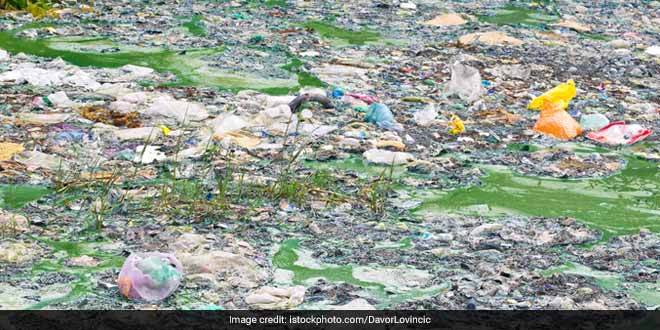Highlights
- More than 9 billion tonnes of plastic has been produced since 1950
- Less than 10% of plastic waste is recycled
- More than 5 trillion pieces of plastic are floating in world's oceans
Toronto: More than nine billion tonnes of plastic has been produced since 1950 with most of it discarded in landfills or the environment, hurting ecosystems and human health, according to the first major global analysis of mass-produced plastics.
Nearly 80 per cent of this plastic ended up in landfills or the environment and production in increasing quickly, researchers from the University of California, Santa Barbara, said in the study published on Wednesday.
Less than 10 per cent was recycled and about 12 per cent was incinerated.
If you spread all of this plastic equally, ankle-deep, it would cover an area the size of Argentina, Roland Geyer, a professor of industrial ecology and the study’s lead author, told the Thomson Reuters Foundation.
It is an enormous amount of material that does not biodegrade … I am very worried. Burning plastics contributes to climate change and adversely impacts human health, while build-ups of the material can hurt the broader environment, Mr Geyer said.
Packaging is the largest market for plastic and the petroleum-based product accelerated a global shift from reusable to single-use containers, researchers said.
Also Read: #BreakFreeFromPlastic: Top 5 Alternatives To Plastic Bags That Are Available In The Market
As a result, the share of plastics in city dumps in high and middle income countries rose to more than 10 per cent by 2005 from less than 1 per cent in 1960.
Unlike other materials, plastic can stay in the environment for thousands of years, Mr Geyer said.
There are more than 5 trillion pieces of plastic floating in the world’s oceans, according to a 2014 study published in a Public Library of Science journal.
This build-up harms marine life and ecosystems on sea and land, Mr Geyer said.
If current trends continue more than 13 billion tonnes of plastic waste will end up in the environment or landfills by 2050, researchers said.
(Reporting by Chris Arsenault @chrisarsenaul, Editing by Belinda Goldsmith; Please credit the Thomson Reuters Foundation, the charitable arm of Thomson Reuters that covers humanitarian news, women’s rights, trafficking, property rights, climate change and resilience. Visit news.trust.org)
Also Read: International Plastic Bag Free Day: Here’s How Plastic Bags Are Killing Our Planet


























